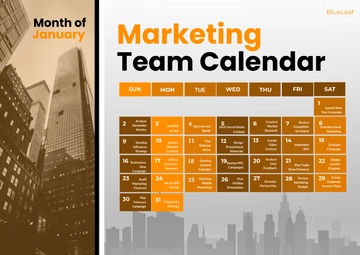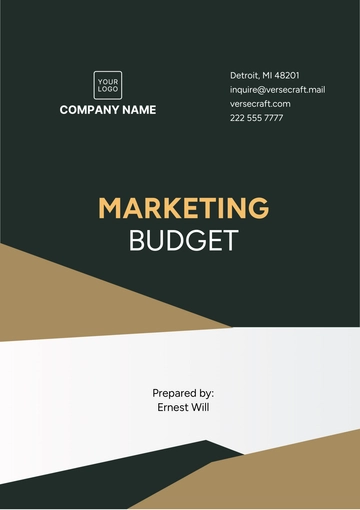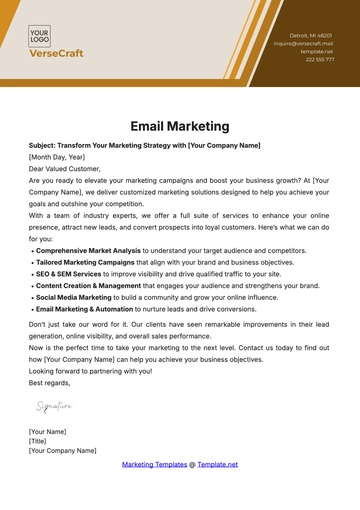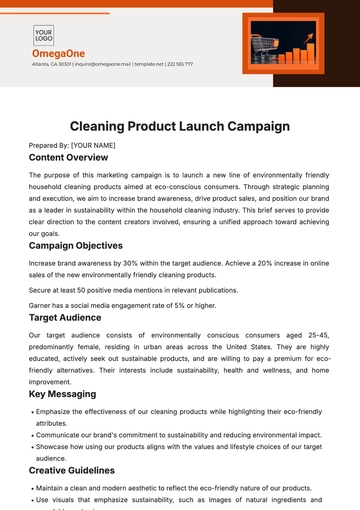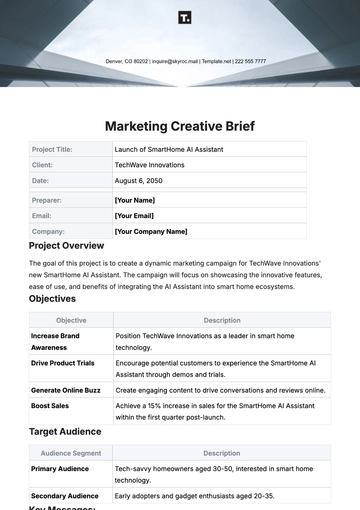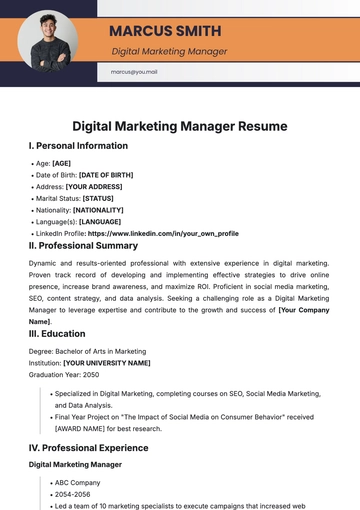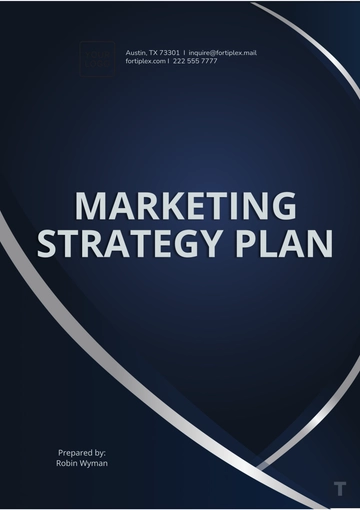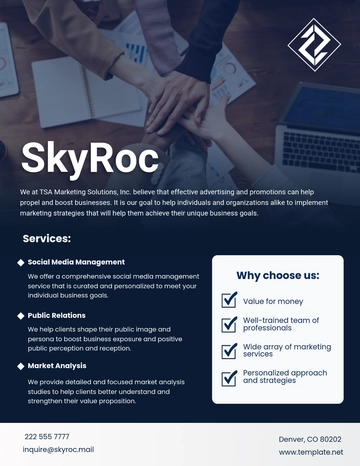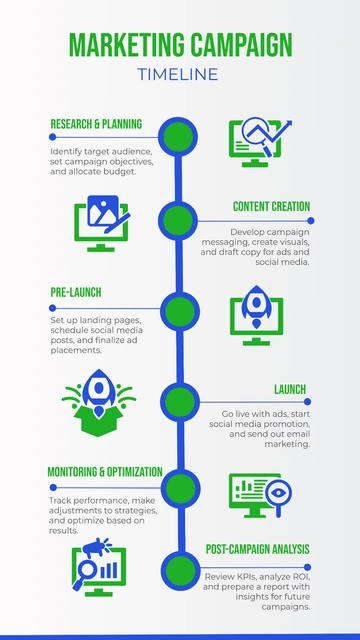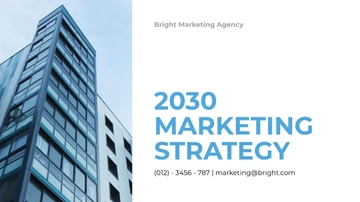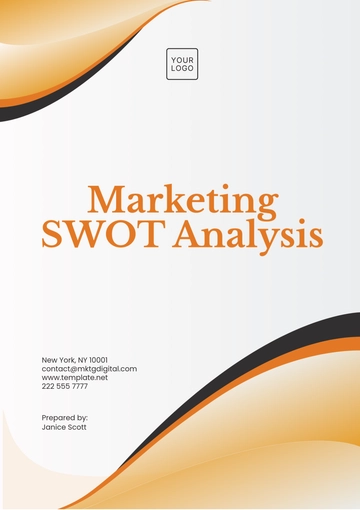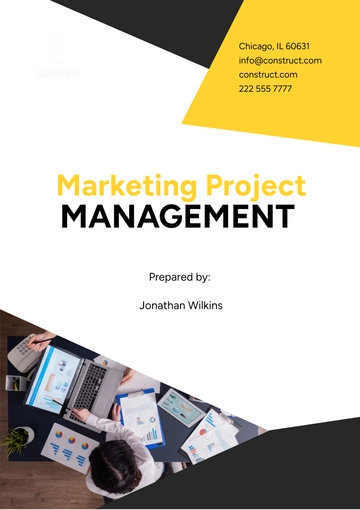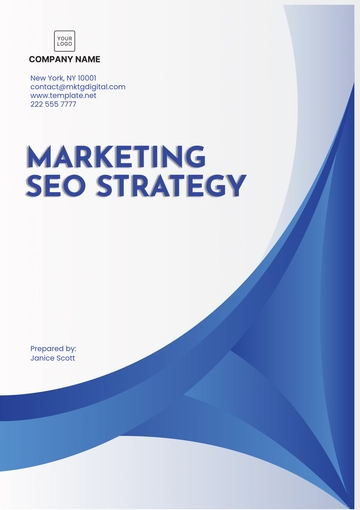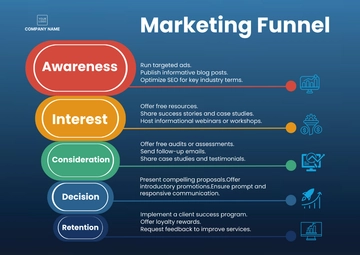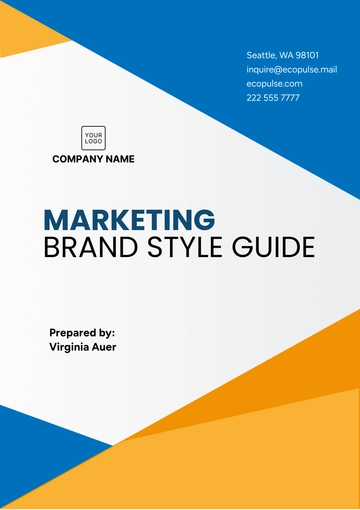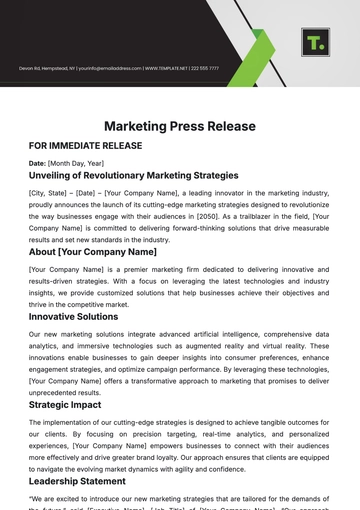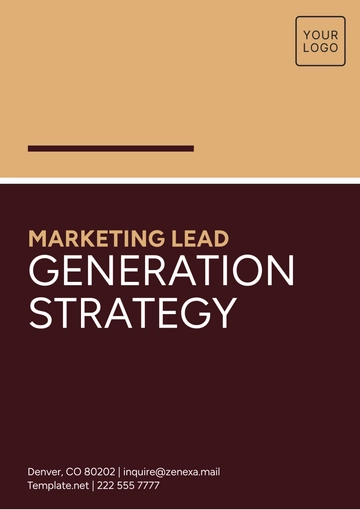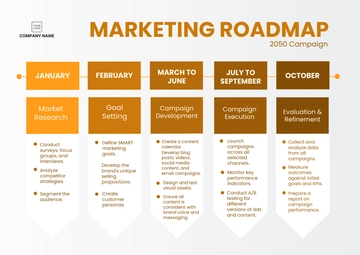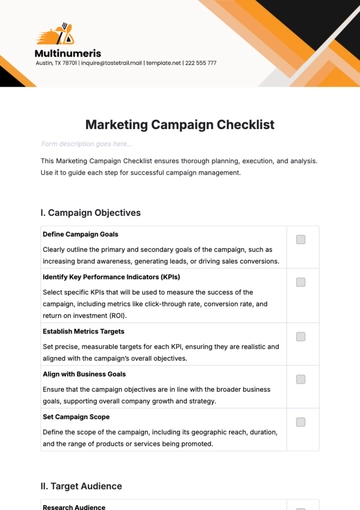Free Marketing SEO Strategy

I. Introduction
Search Engine Optimization (SEO) is a crucial component of our digital marketing strategy at [Your Company Name]. This SEO Strategy Plan outlines our approach to increasing organic traffic, improving search engine rankings, and enhancing the online visibility of our brand. By leveraging best practices, targeted keywords, and high-quality content, we aim to drive sustained growth in traffic and conversions through organic search channels.
II. SEO Objectives
Establishing clear objectives is essential for guiding our SEO efforts and measuring success. These objectives will align with our broader business goals and provide a framework for our SEO strategy.
Increase Organic Traffic by [30%]: By optimizing our website and content, we aim to drive a significant increase in organic traffic within the next [12 months]. This objective will be measured using Google Analytics and other tracking tools.
Improve Search Engine Rankings for Primary Keywords: We will focus on improving our search engine rankings for [10] key terms that are critical to our business. Achieving top positions for these keywords will enhance our visibility and attract more qualified leads.
Achieve a [20%] Increase in Click-Through Rate (CTR): By optimizing meta descriptions, title tags, and other on-page elements, we will increase the CTR from search engine results pages (SERPs), leading to higher engagement and conversions.
Boost Domain Authority by [15%]: Through link-building efforts and content marketing, we aim to increase our website’s domain authority, which will contribute to better overall rankings and credibility in the eyes of search engines.
III. Keyword Research and Analysis
Effective keyword research is the foundation of our SEO strategy. By identifying the right keywords, we can target the most relevant audience and ensure that our content aligns with what users are searching for.
Identify Primary Keywords: We will conduct thorough keyword research to identify primary keywords that align with our services and audience. Tools such as Google Keyword Planner, and SEMrush will be used to discover high-volume, low-competition keywords that are relevant to our industry.
Long-Tail Keywords: In addition to primary keywords, we will target long-tail keywords that are more specific and often less competitive. These keywords are critical for attracting niche audiences and driving highly qualified traffic.
Competitor Keyword Analysis: We will analyze the keywords our competitors are ranking for to identify opportunities and gaps in our strategy. This analysis will help us understand what is working in the industry and allow us to refine our approach.
Keyword Mapping: Once the keywords are identified, we will map them to specific pages on our website. This ensures that each page is optimized for a particular keyword, improving our chances of ranking well for those terms.
IV. On-Page SEO Optimization
On-page SEO involves optimizing individual pages to rank higher and earn more relevant traffic in search engines. This section details the tactics we will use to improve our on-page SEO performance.
Title Tags and Meta Descriptions: We will craft compelling title tags and meta descriptions for each page, incorporating our target keywords. These elements are crucial for improving click-through rates from SERPs.
Header Tags (H1, H2, H3): Proper use of header tags will be implemented to structure our content effectively. These tags help search engines understand the hierarchy of information on the page and improve the user experience.
Content Optimization: Our content will be optimized for SEO by incorporating keywords naturally, ensuring readability, and providing valuable information to our audience. We will also focus on optimizing images, videos, and other media to support our content.
Internal Linking Structure: We will develop a strategic internal linking structure to help distribute page authority across our website. This will not only improve SEO but also enhance user navigation and engagement.
V. Technical SEO
Technical SEO is crucial for ensuring that search engines can crawl and index our website effectively. This section outlines the technical improvements we will make to enhance our site’s SEO performance.
Site Speed Optimization: We will optimize our website’s loading speed by compressing images, leveraging browser caching, and minimizing CSS and JavaScript files. Faster load times contribute to better user experience and improved rankings.
Mobile-Friendliness: With the increasing use of mobile devices, ensuring our website is mobile-friendly is essential. We will implement responsive design and AMP (Accelerated Mobile Pages) to improve mobile usability and SEO.
XML Sitemap and Robots.txt: An updated XML sitemap and properly configured robots.txt file will be submitted to search engines to ensure all pages are crawled and indexed correctly. This step is critical for maintaining an organized and accessible website.
SSL/HTTPS Implementation: Security is a ranking factor for search engines, and as such, we will ensure our website is fully secured with HTTPS. This enhances user trust and contributes to better SEO performance.
VI. Content Strategy
Content is the cornerstone of our SEO strategy. Creating high-quality, relevant content will help attract and engage our target audience, leading to higher rankings and increased traffic.
Blogging and Articles: We will develop a content calendar focused on publishing regular blog posts and articles that address the needs and interests of our target audience. These posts will be optimized for SEO and designed to attract organic traffic.
Guest Posting and Backlinking: We will pursue opportunities for guest posting on relevant industry blogs and websites. These efforts will help us build backlinks, which are critical for improving domain authority and search engine rankings.
Content Refresh and Updates: Existing content will be regularly reviewed and updated to ensure it remains relevant and competitive. This includes adding new information, optimizing for current keywords, and improving readability.
Multimedia Content: In addition to written content, we will create and optimize multimedia content such as videos, infographics, and podcasts. This type of content can improve engagement and attract different segments of our audience.
VII. Off-Page SEO
Off-page SEO focuses on building the site’s authority through external factors like backlinks and social signals. This section outlines our approach to enhancing our online reputation and authority.
Link-Building Campaigns: We will engage in strategic link-building campaigns to acquire high-quality backlinks from reputable websites. This will help improve our domain authority and search engine rankings.
Social Media Engagement: Social media platforms will be used to promote our content and engage with our audience. Increased social media activity can lead to more traffic and better SEO performance.
Online Reputation Management: We will monitor and manage our online reputation by responding to reviews, addressing any negative feedback, and encouraging satisfied clients to leave positive reviews. A strong online reputation can significantly boost SEO.
Influencer Outreach: Collaborating with influencers in our industry will help us reach a broader audience and generate more backlinks. This, in turn, will contribute to our SEO efforts and improve brand visibility.
VIII. Monitoring and Reporting
Continuous monitoring and reporting are vital for assessing the effectiveness of our SEO strategy. This section details the tools and metrics we will use to track our progress and make data-driven decisions.
Google Analytics: We will use Google Analytics to track organic traffic, user behavior, and conversions. This data will help us understand how our SEO efforts are impacting overall performance and where adjustments are needed.
Google Search Console: Google Search Console will be used to monitor search engine indexing, site performance, and keyword rankings. It will also provide insights into any technical issues that need to be addressed.
SEO Tools: Advanced SEO tools will be employed to conduct keyword analysis, track backlinks, and monitor competitors. These tools provide comprehensive insights that will guide our SEO strategy.
Monthly Reporting: We will generate monthly reports that summarize key SEO metrics, progress towards objectives, and any areas of concern. These reports will be shared with the relevant stakeholders to ensure transparency and ongoing alignment.
IX. Budget and Resources
Allocating the right budget and resources is essential for the successful execution of our SEO strategy. This section outlines our budget and the resources required to achieve our objectives.
Item | Cost |
|---|---|
SEO Tools Subscription Costs | $5,000 |
Content Creation | $15,000 |
Link-Building and Outreach | $10,000 |
Technical SEO Improvements | $7,500 |
Monitoring and Reporting | $2,500 |
Miscellaneous | $2,000 |
Total Budget | $42,000 |
The budget outlined above totals [$42,000], which is strategically allocated across various essential components of our SEO strategy.
SEO Tools Subscription Costs: At [$5,000], this allocation ensures we have access to industry-leading tools that will aid in keyword research, competitor analysis, and overall performance tracking. These tools are critical to making informed, data-driven decisions throughout the campaign.
Content Creation: With [$15,000] dedicated to content creation, this budget allows us to produce high-quality, SEO-optimized content that will attract organic traffic and engage our target audience. This also covers the cost of hiring specialized SEO copywriters and content strategists.
Link-Building and Outreach: The [$10,000] allocated here will support our efforts in acquiring high-quality backlinks through guest posting, influencer outreach, and digital PR campaigns. These activities are essential for improving our domain authority and search engine rankings.
Technical SEO Improvements: A budget of [$7,500] is set aside for necessary technical enhancements, including site speed optimization, mobile-friendliness, and SSL implementation. These improvements are vital for ensuring that our website meets the technical standards required by search engines.
Monitoring and Reporting: The [$2,500] allocated for monitoring and reporting ensures that we can continuously track our progress, generate detailed reports, and make necessary adjustments to our strategy.
Miscellaneous: A contingency fund of [$2,000] is reserved for any unexpected costs or additional needs that may arise during the execution of the SEO strategy.
This budget is designed to ensure that all aspects of the SEO strategy are adequately funded, allowing us to achieve our objectives and drive significant improvements in organic traffic and search engine rankings.
X. Conclusion
This SEO Strategy Plan serves as a comprehensive guide for [Your Company Name] to achieve its digital marketing goals through effective search engine optimization. By implementing the strategies outlined in this plan, we are confident that we will see significant improvements in our organic traffic, search engine rankings, and overall online visibility. Regular monitoring, reporting, and adjustments will ensure that our SEO efforts remain aligned with our objectives and continue to drive meaningful results for our business.
- 100% Customizable, free editor
- Access 1 Million+ Templates, photo’s & graphics
- Download or share as a template
- Click and replace photos, graphics, text, backgrounds
- Resize, crop, AI write & more
- Access advanced editor
Improve your search rankings with our Marketing SEO Strategy Template from Template.net. Fully customizable and editable, this template offers a comprehensive and actionable design. Easily personalize the strategy, editable in our Ai Editor Tool, to outline SEO goals, tactics, and metrics. Strengthen your digital marketing efforts with a well-crafted SEO strategy template.
You may also like
- Marketing Google Slide
- Marketing Letter
- Marketing Quotation
- Marketing Report
- Marketing Strategic Plan
- Marketing Plan
- Marketing Proposal
- Marketing Flyer
- Marketing Presentation
- Real Estate Marketing Plan
- Marketing Contract
- Marketing Agreement
- Marketing Resume
- Marketing Checklist
- Marketing Brochure
- Marketing Banner
- Marketing Schedule
- Marketing Vector
- Marketing Logo
- Marketing Chart
- Marketing Campaign Plan
- Marketing Budget
- Marketing Postcard
- Marketing Poster
- Marketing Facebook Post
- Marketing Instagram Post
- Marketing Newsletter
- Marketing Infographic

